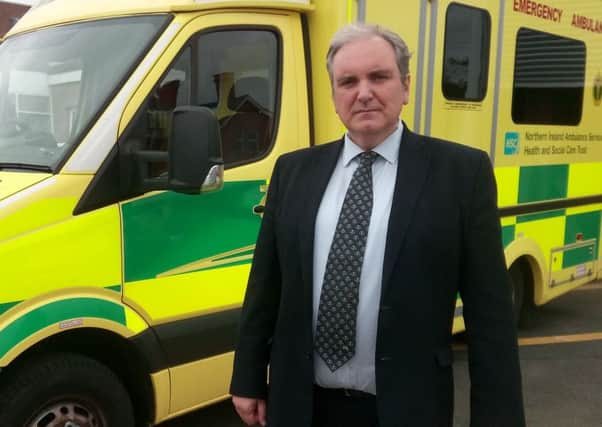Changes to Ambulance Service 999 call procedures will benefit patients, says doctor


The organisation’s medical director, Dr Nigel Ruddell, was speaking ahead of the launch of a 12-week consultation process, during which the public will be given the chance to have their say on the ambitious plans.
Dr Ruddell said the introduction of the ‘Clinical Response Model’ – a new way of handling and prioritising 999 calls similar to systems already used by ambulance services in other parts of the UK – is designed to improve the service in all areas of Northern Ireland.
Advertisement
Hide AdAdvertisement
Hide Ad“What we are aiming to do is focus our response on those patients who we genuinely know need the fastest response; those patients who we know are critically ill, who literally are at risk of dying within a few minutes and we want to ensure they get the response they need and deserve,” he said.
Launching the consultation document today, NIAS chief executive Michael Bloomfield, said the NIAS has been struggling to meet increasing demand on its services. Having failed to meet its response time targets since 2012, he said the current model of delivery is “unsustainable”.
“It is now time to reform our clinical response model which has been in place for over 40 years. At present NIAS categorises over 30% of all calls we receive as immediately life threatening, requiring an eight-minute response. Evidence from elsewhere and the experience of our own clinical staff indicates that a much smaller proportion of calls require this speed of response.
“By more accurately identifying the most clinically urgent calls, we will more consistently be able to respond to those calls within the appropriate time. For other calls our proposal will mean that we send the most appropriate type of response first time.”
Advertisement
Hide AdAdvertisement
Hide AdWhile the NIAS is pushing ahead with its public consultation and other preparations for the proposed changes, Mr Bloomfield admits that the plans will have to be signed off by a senior civil servant, or a Stormont minister if the Assembly gets back up and running.
Giving an assurance that introducing the new ‘Clinical Response Model’ is not a cost-cutting exercise, Dr Ruddell said it will require “a significant investment” of around £30m as NIAS takes on more than 330 additional staff and makes significant improvements to its fleet of vehicles and estate.
He also stressed that the proposed reforms are not about changing targets so that the service can meet them.
“The targets people refer to are based on recommendations that are over 40 years old, from a time when there weren’t even paramedics in existence. We are now a modern ambulance service with the evidence which shows us which cases absolutely need the fastest response. We will be looking to focus our response to those while actually improving the overall response to everybody else as well,” he added.
The full consultation document can be accessed online at www.nias.hscni.net